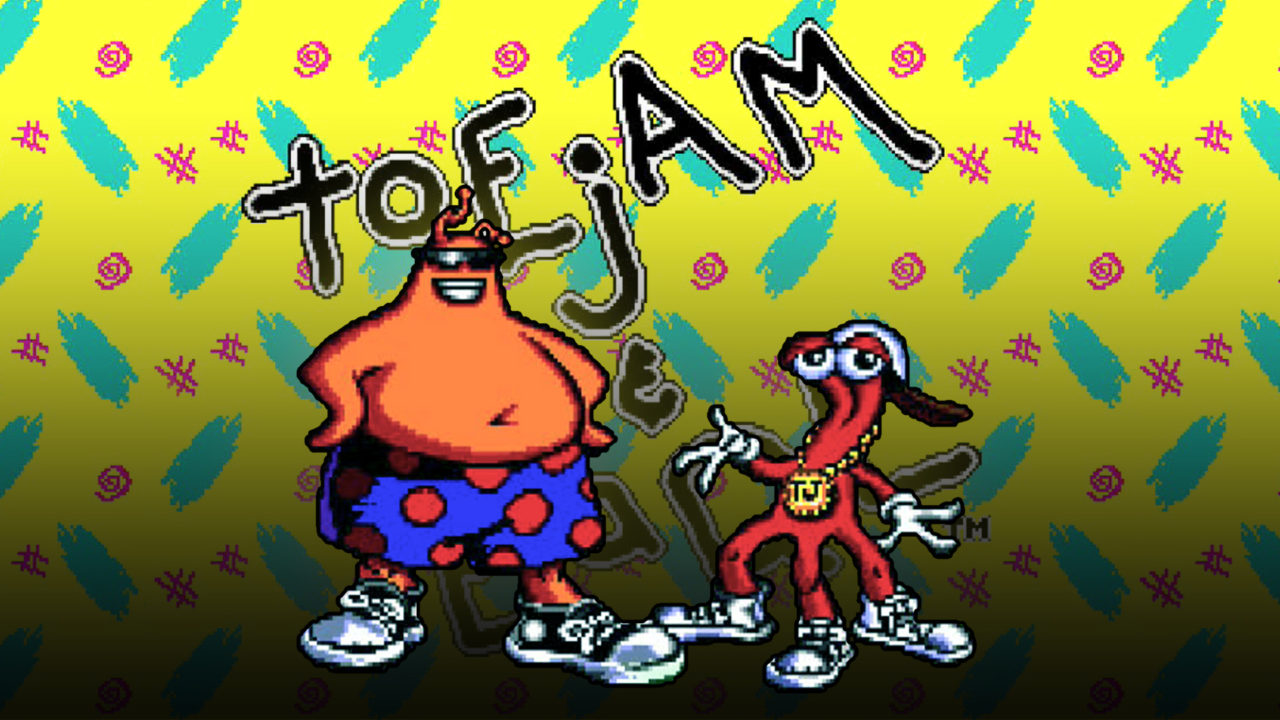ToeJam & Earl: Back in the Groove is out today and we here at Duel Screens could not be more excited. As its release date approached, something struck me that I hadn’t really pieced together until recently. Most of my excitement for new games is directed toward retro-inspired titles. 8-Bit sprites, bleeps and bloops, and returning to worlds planted firmly in my childhood memories. The power of nostalgia has taken over my decision making as of late, and it is fascinating to say the least. Greg Johnson, creator of ToeJam & Earl, and friend of Nintendo Duel Screens, had time to sit down and chat about retro gaming, old-school tendencies, and the power of nostalgia in today’s gaming landscape.

Duel Screens: Greg, thank you so much for both coming on Nintendo Duel Screens a few months ago and speaking with me here now. So with ToeJam & Earl: Back in the Groove due out on March 1st, I wanted to take a look at how the power of nostalgia may have had an affect on the development and decision making process. To set that stage, what do you think of the current state of “retro” inspired gaming?
Greg Johnson: Within the last 5 to 10 years there has been a huge retro game movement and we are still in the midst of it. I continue to be really excited by this, not just because of the nostalgia, but also because part of going Retro means capturing some of that inventive and creative Retro spirit that we all remember and love. In the “old days”, before the games business was such big money, game publishers and game developers did a lot more experimenting. Games often were more “weird” or “out there”, and developers often had to work within tight constraints and this made for creative solutions. I think your term “Retro-inspired” gaming is a good term, as it captures the notion of the spirit of Retro originality and Retro quirkiness without necessarily being retro per se.
DS: What do you think is the main reason for the resurgence of both retro style games and remakes of retro classics?
GJ: I think the growth of the Retro movement has been fueled, in large part, by the advent of crowd-funding, with small indie developers all of a sudden having a way to fund new games. Retro styled games are generally cheaper to build, and so more suitable for small budget crowd funded projects, and they also appeal to the indie crowd who builds and funds these titles. Also retro titles are easier to get funded since people are always more willing to pay for things they are familiar with. There is also the simple fact that Retro can really only happen after a certain amount of time has passed. Things are just “old when they are 10 years old, but they are “Retro” when they are 20 or 30 years old. The games industry isn’t that old. I was there when it started back in the early 80’s. My first game Starflight was started in 1983 and released in 1986. We’re at a point now where the industry is old enough to have Retro. Another thing that fuels Retro-love is a backlash response to the big-money AAA games that are forced to be risk-averse and focus on sure-bet features like proven game mechanics and better graphics. Retro fans come in two basic flavors – old skoolers – who love Retro because it’s nostalgic and takes them back to a time of greater enthusiasm for gaming… and new-skoolers, the younger set who weren’t around when these old games came out. For this younger generation of Retro fans I find that it is often the case that they feel a bit disillusioned by the commercial nature of games and the industry and are looking for something a bit more outside-the-normal-box, and more rebellious feeling. Retro games fit the bill pretty nicely.
DS – When it came to TJ&E, how much of an impact on decision making does the retro revival have when designing TJ&E?
GJ: Well… I can’t remember ever making a decision to please the Retro fans in a general way. That said almost all of the design decisions made, were made to speak to the nostalgia of the many old skool TJ&E fans. So, from that sense, I suppose you could say that game was all about Retro – but Retro specific to these original games and to the memories people had playing them. This was our guiding light, and when we weren’t sure what the fans wanted we would put the question to them in our forum or on our FB page and ask “Hey what do you guys want? X or Y?” They were never shy about answering. It is a tricky thing, trying to create a game that feels both old and new at the same time. I’d like to say we did a great job, but really the only ones who can say are the fans and the reviewers, so we shall see what they think. I can say that we did the best job we could of listening to what our fans wanted. So this game is for you guys. I hope we did justice to your memories, and I hope you will feel like you want to share it with a new generation. I’m not sure what will happen 20 years from now if this new generation loves our game – will we have retro games that are built off of retro games? Hmmmm (says the Wiseman in the Carrotsuit).

It seems like the nostalgia fueled retro revival is only just beginning. It was a pleasure speaking with Greg again. If you want to hear Greg on our podcast, check that out here.
ToeJam & Earl: Back in the Groove is out now on PS4, PC, Xbox One and Nintendo Switch. You can read my review of the game here.
Editors Note: This piece was updated with the correct content for the final question.





